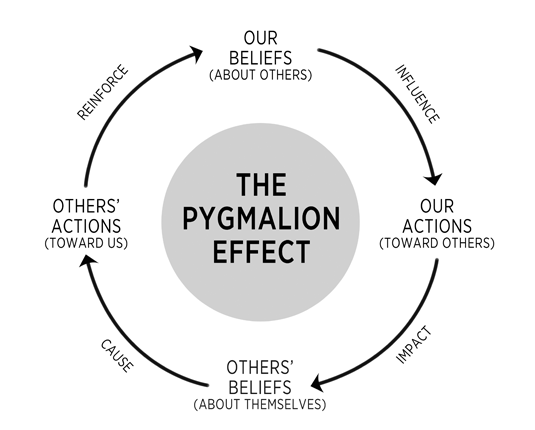How does the Pygmalion Effect apply to customer experience?
First of all, what is the Pygmalion Effect? According to Wikipedia, it is…
… the phenomenon whereby the greater the expectation placed upon people, the better they perform. The effect is named after the Greek myth of Pygmalion. Pygmalion was a sculptor who fell in love with a statue he had carved.
The statue then came to life. (Spoiler alert: after a day, it turned back into stone.)
The Pygmalion Effect is most often applied to teachers and their students. As a result, I can see how it also applies to the employee experience, i.e., the greater the expectations we place on people, the better they will perform. I do think, though, that there’s a lot that goes into that, like making sure employees are prepared with the tools, resources, knowledge, and encouragement they need to achieve those expectations.
But what about the customer experience? What about the expectations that customers have about their experience with your company. Can those expectations drive a company to perform better?
The Pygmalion Effect is often to referred to as self-fulfilling prophecy, and it follows these four key principles:
- We form certain expectations of people or events.
- We communicate those expectations with various cues.
- People tend to respond to these cues by adjusting their behavior to match them.
- The result is that the original expectation becomes true.
In a nutshell, it’s learning about an expectation and then acting in a way that is consistent with that expectation. Having the expectation is not enough, though; the expectation has to be the reason or the cause of something happening. A self-fulfilling prophecy does not come true because you expected it to; the expectation is what causes the change in the behavior that makes it come true.
The following graphic from the Class Teaching blog outlines the thinking behind the Pygmalion Effect.
 |
Let’s start from the top and apply it to the customer experience, starting with the customer, of course, and replacing “our” and “us” with “customer” and “others'” with “company’s.”
- Customer beliefs about the company influence…
- Customer actions toward the company, which impact…
- The company’s beliefs about itself, causing…
- The company’s actions toward customers, reinforcing…
- Customer beliefs about the company
Makes sense to me.
The parts I’m concerned about are #3 and #4. Companies get lazy. Companies get arrogant. Companies’ beliefs about themselves are often out of alignment with customers’ beliefs; is that too large a gap to overcome? Companies still don’t prioritize the customer experience. Companies still think they are in business to maximize shareholder value.
If we focus on this very important component of the Effect, that the expectation is what causes the change in behavior that makes the expectation come true, then what must companies do? Without a doubt, the first thing they need to do is understand who their customers are, followed immediately by understanding customers’ expectations, including those around the quality, performance, timing, attitudes, interactions, needs, value, and more. They may also have expectations relative to your competitors or to other competing products or services. We cannot meet or exceed expectations we don’t know or understand – and we certainly can’t change behaviors without that information, either.
And yet, here’s another thought. What role do companies have in setting customer expectations?
Blessed is he who expects nothing, for he shall never be disappointed. -Alexander Pope



